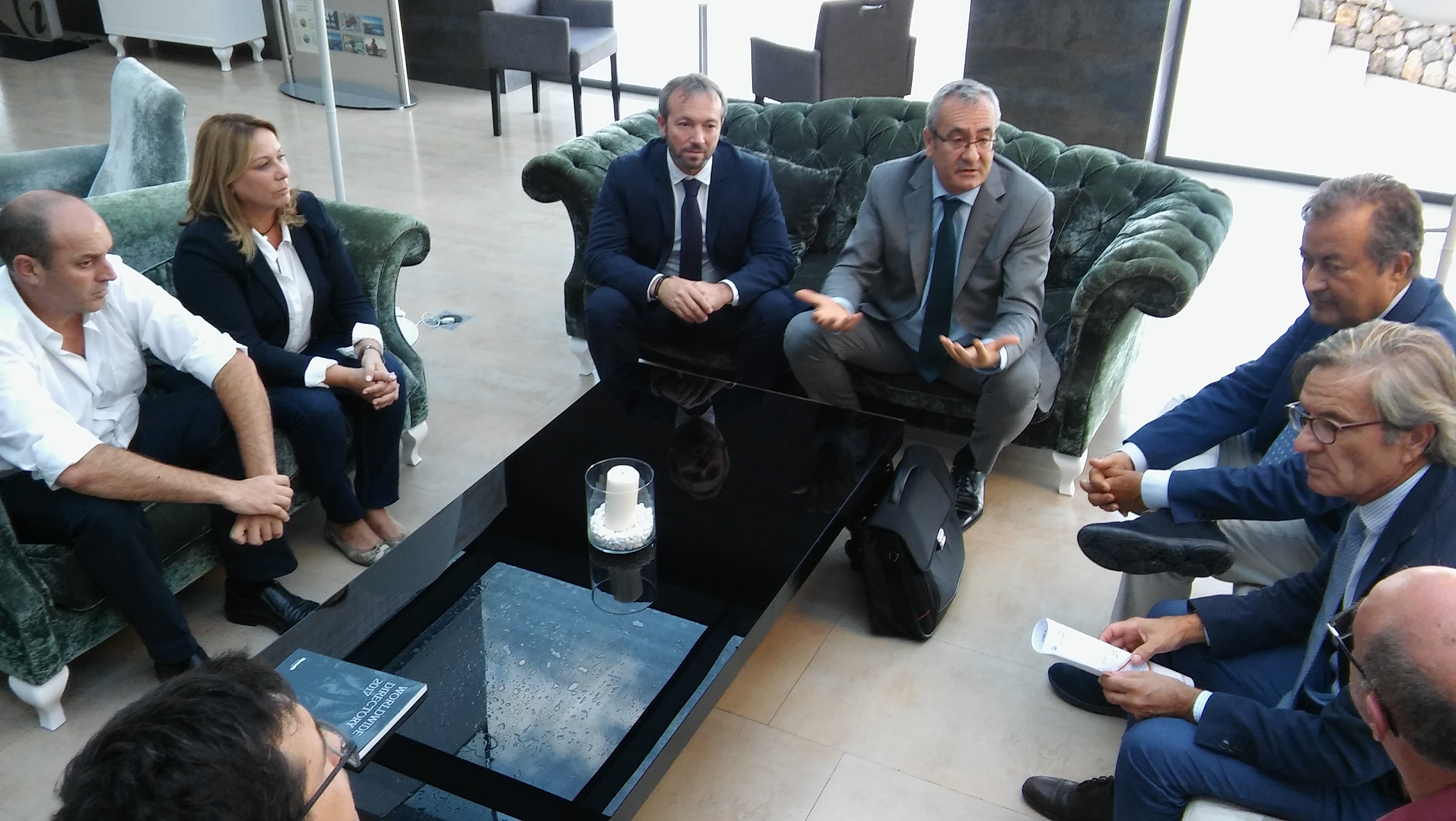
State Ports and the Port Authority of the Balearic Islands agree to finance the construction of a pontoon jetty linking Cala Corb and Moll d'en Pons
Maó
18/09/2017
Jose Llorca, president of State Ports, and his counterpart in the Port Authority of the Balearic Islands, Joan Gual de Torrella, announced their agreement to finance a pedestrian jetty linking the sections of es Castell known as the Moll d'en Pons and Cala Corb.
This new pontoon will enable these two areas of the Port of Mahon, currently separated by a cliff, to be connected over water and thus made accessible to pedestrians. The construction will be 420 metres long and 3 metres wide and will be kept separated from the cliff to prevent damage from possible land and stone slides and to preserve the cliff from the new structure. Furthermore, the jetty will provide berthing space for about a hundred mostly small boats up to 15 metres in length.
The estimated cost is €2.5 million, split almost exactly 50/50 between the Port Authority of the Balearic Islands, who will fund the project from its equity, and State Ports, who intends to make a direct contribution from the Inter-Ports Compensation Fund. The tender process to award the project is expected to be completed by the end of this year and actual construction to last about two years.
Llorca pointed out that this is the first time the Port Authority of the Balearic Islands has received a contribution from the Inter-Ports Compensation Fund, which will be used to improve accessibility for citizens from Es Castell. Similarly, Lluis Camps, Mayor of the capital town of Minorca, expressed his satisfaction at this commitment to undertake what has been a longstanding demand to help develop the coastline and open access for Es Castell citizens to the sea.
For Joan Gual, this project can be tied to the Port of Mahon Action Plan, which seeks to overturn the perception that the port is merely a passenger and goods traffic hub and embrace the idea of greater civic and tourist use of the area. “Mahon is slowly giving up its role as a cargo port; that should not be interpreted as a weakness but rather as an opportunity to find other uses for the port, to provide alternative ways of enhancing economic recovery through the maritime world”.







